Your mag meter suddenly shows erratic readings – did you check the grounding? Poor grounding causes 50% of all mag meter failures in the field.
Magnetic flow meters require grounding to complete the electrical circuit for accurate measurement. Without proper grounding: 1) Stray voltages distort the weak flow signal (typically 1-10mV), 2) Electrical noise interferes with measurements, 3) Safety hazards from static buildup occur, especially in flammable fluids.
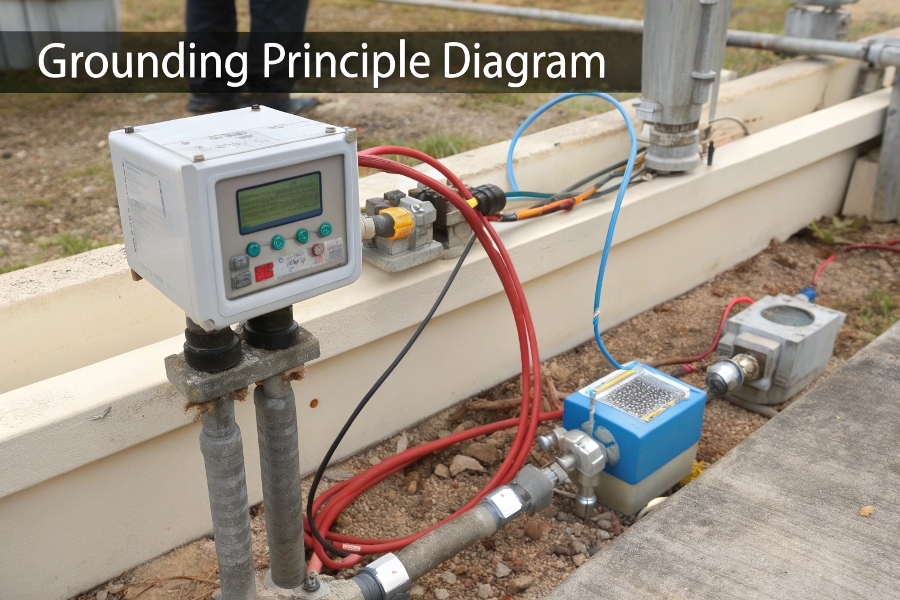
Mag Meter Electrical Circuit Completion
Let’s examine why grounding is non-negotiable for mag meter operation.
Why Is Grounding Important in a Magnetic Flow Meter?
The physics of mag meters demands a closed electrical loop.
Grounding serves three critical functions: 1) Provides reference potential for the electrode signals (0.5mV precision needed), 2) Diverts stray currents from pumps/variable frequency drives, 3) Prevents static accumulation in non-conductive pipes. Proper grounding reduces noise by 90%1 compared to ungrounded installations.
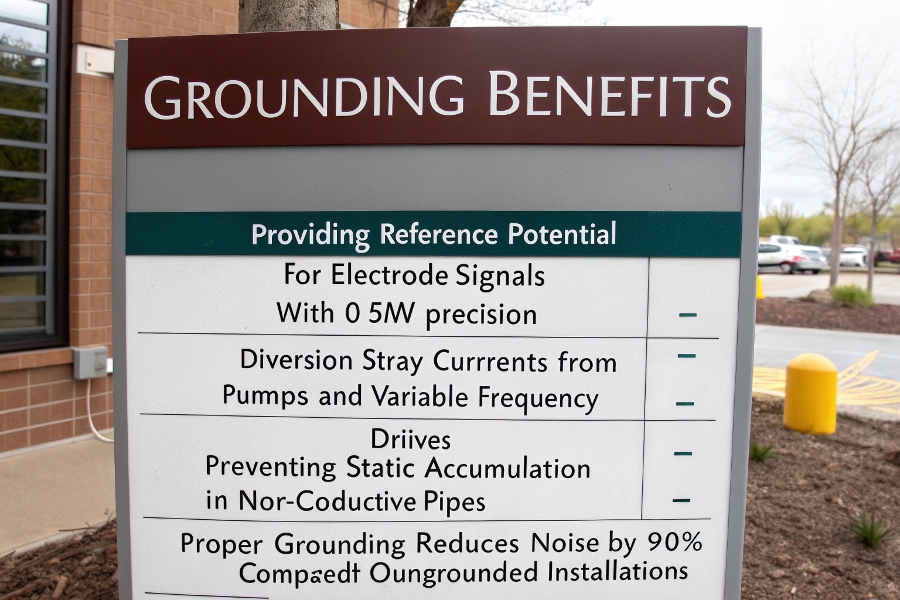
Grounded vs Ungrounded Performance
Grounding quality directly impacts accuracy:
Grounding Resistance vs Measurement Error
| Ground Resistance | Signal Noise | Typical Error | Solution |
|---|---|---|---|
| <1 ohm | 0.1% FS | ±0.5% | Ideal |
| 1-5 ohms | 0.5% FS | ±1.5% | Acceptable |
| 5-10 ohms | 2% FS | ±5% | Needs improvement |
| >10 ohms | 10% FS | Unreliable | Immediate fix required |
What Are Grounding Rings For Magnetic Flow Meters?
These unassuming metal rings solve conductivity challenges.
Grounding rings (also called earth rings) create electrical contact points when: 1) Pipe material is non-conductive (PVC, lined steel), 2) Fluid conductivity is marginal (>5μS/cm but <50μS/cm), 3) Electrodes cannot reliably contact the fluid. They’re always required for lined pipes and low-conductivity liquids (<20μS/cm).

Grounding Ring Cross-Section
Grounding ring selection guidelines:
Grounding Ring Types and Applications
| Type | Material | Best For | Limitations |
|---|---|---|---|
| Standard | 316SS | Water, chemicals | Not for acids |
| Hastelloy | C276 | Corrosive fluids | High cost |
| Flanged | Carbon steel | Large pipes | Needs coating |
| Insertion | Titanium | High-purity systems | Limited sizes |
| Capacitive | Ceramic-coated | Abrasive slurries | Reduced sensitivity |
What Are the Requirements for a Magnetic Flow Meter?
Five installation must-haves for reliable operation.
Essential requirements: 1) Proper grounding system (<1 ohm preferably), 2) Full pipe conditions (no air/gas pockets), 3) Minimum conductivity (5μS/cm standard, 20μS/cm for low-flow), 4) Pipe vibration isolation, 5) Adequate straight runs (5D upstream, 3D downstream minimum). Missing any single requirement can cause 10-100% measurement errors.
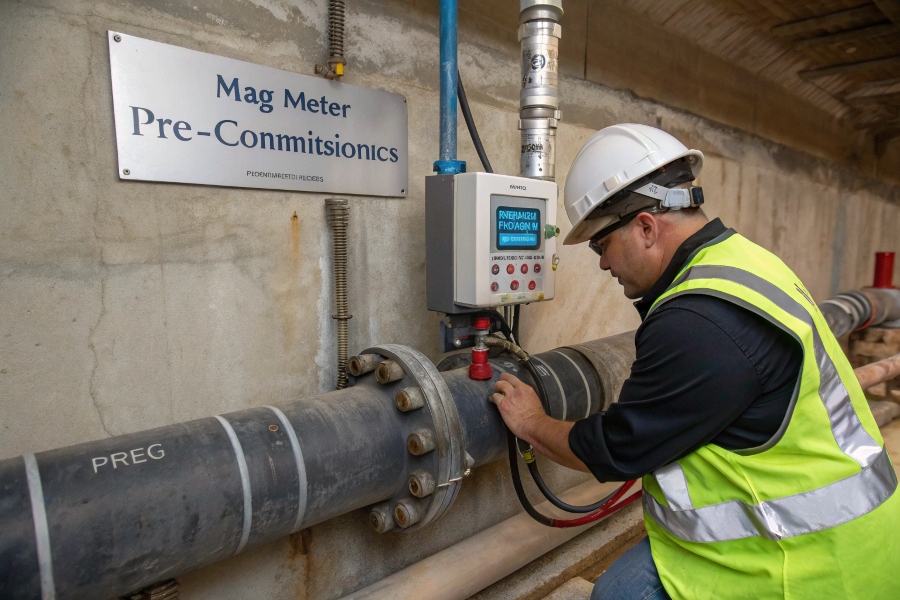
Mag Meter Pre-Commissioning Checks</50μS/cm)
Verification procedure table:
Magnetic Flow Meter Installation Verification
| Checkpoint | Tool/Method | Pass Criteria |
|---|---|---|
| Ground continuity | Multimeter (Ω mode) | <1 ohm pipe to ground |
| Pipe fill | Ultrasonic tester | Continuous liquid sound |
| Conductivity | Lab analyzer | >5μS/cm for water |
| Installation angle | Digital level | Avoid top-mounted if possible |
| Electrical isolation | Megohmmeter | >20MΩ between phases |
What Are the Disadvantages of Magnetic Flow Meter?
Every technology has limitations – here’s when to avoid mag meters.
Key limitations: 1) Cannot measure gases/steam (no conductivity), 2) Requires minimum fluid conductivity (5μS/cm), 3) Accuracy drops below 0.3 m/s flow velocity, 4) Grounding complexities in lined/insulated pipes, 5) Higher power requirements (25W) than mechanical meters. These constraints make them unsuitable for 30% of industrial flow applications.
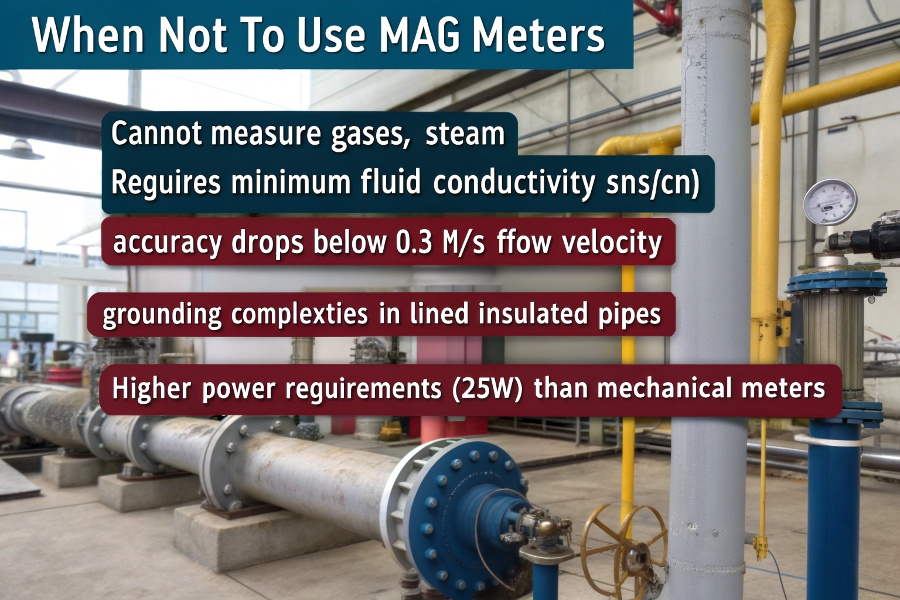
When Not to Use Mag Meters
Comparison with alternative technologies:
Flow Meter Technology Selection Guide
| Application | Mag Meter Suitable? | Better Alternatives |
|---|---|---|
| Distilled water | No (low conductivity) | Coriolis, ultrasonic |
| LPG transfer | No (non-conductive) | Turbine, positive displacement |
| High-viscosity oil | Marginal | Coriolis, oval gear |
| Slurries >20% solids | Yes (with ceramic liner) | – |
| Steam lines | Never | Vortex, differential pressure |
Cost Analysis: Grounding System Components
Proper grounding requires specific investment.
Typical grounding system costs: 1) Grounding electrode ($50-200), 2) Copper cabling ($3-10/ft), 3) Potential equalization ($100-500), 4) Surge protection ($150-1000). While adding 5-15% to project costs, proper grounding prevents 80% of mag meter failures (saving $2000+ per service call).
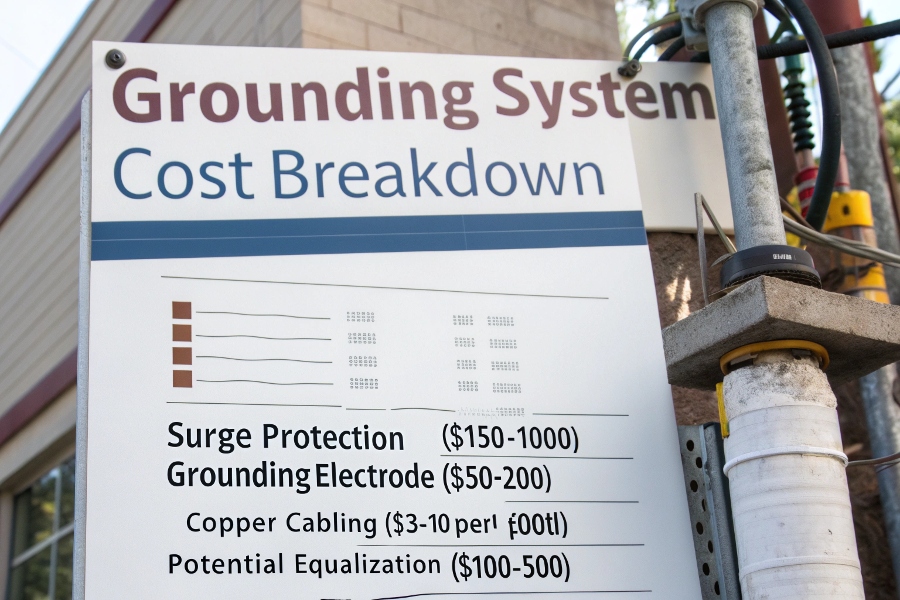
Grounding System Cost Breakdown
Component selection matrix:
Grounding System Component Options
| Component | Budget Option | Premium Choice | OEM Solution |
|---|---|---|---|
| Ground rod | Galvanized steel | Copper-bonded rod | Integrated flange ground |
| Cable | 6 AWG copper | 4 AWG tinned copper | Double-shielded coax |
| Clamps | Standard brass | Exothermic weld | Certified explosion-proof |
| Protection | Basic lightning arrester | Zone 0 intrinsically safe | Fiber-optic isolated |
Conclusion
Magnetic flow meters require proper grounding to complete the measurement circuit, eliminate noise, and ensure safety. While grounding adds complexity and cost, it’s essential for achieving the technology’s promised ±0.5% accuracy. Non-conductive pipes and low-conductivity fluids demand special grounding solutions like grounding rings. When proper installation requirements cannot be met, alternative flow measurement technologies should be considered.
-
This information is vital for optimizing mag meter performance and ensuring precise readings in your systems. ↩
